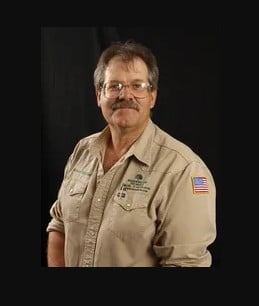Already looking ahead to next year’s fires and on the tail of last week’s Meyers Fire, which burned 12 acres in Camino, El Dorado County officials are in the first stages of developing a weed abatement strategy for unincorporated areas of the county.
Supervisors received a report on Tuesday from principal analyst Creighton Avila, who followed up on board direction given in January 2018 to begin exploring potential code enforcement changes. Avila said code enforcement as a whole was a broad spectrum to consider, so staff broke the process down into manageable chunks, first examining vegetation management policies.
Policies already in place include Cal Fire’s Code 4291, otherwise known as defensible space, wherein landowners are required to keep 100 feet around structures clear of brush, small trees and other flammable material.
However, as District 3 Supervisor Brian Veerkamp noted Tuesday, much of Cal Fire’s budget goes to fire suppression and the agency often lacks resources to enforce defensible space regulations.
The county also has an ordinance code section dedicated to fire prevention, which in part requires landowners to keep a 30-foot fire break around structures and keep rooftops clear of flammable debris. The code also places restrictions on campfires, incinerators, fireworks and smoking outdoors, and grants some fire officials the ability to arrest violators.
Some areas of the county, such as El Dorado Hills and the Cameron Park Community Services District, employ regulations to keep overgrown weeds and the risks they pose at bay. But to date, El Dorado County does not have specific timeline-driven regulations regarding weed abatement, or strategies in place to enforce such regulations.
In researching potential directions, Avila said staff looked at ten California counties with a similar population living in unincorporated areas as in El Dorado County, such as Stanislaus, San Joaquin and Contra Costa counties.
Of those studied, Avila said all ten counties had defined vegetation management rules with specific timelines. Seven of the counties require a landowner to take care of their weeds 20 days after being notified, while three require abatment within 10 days of notification.
If a property goes untreated past the deadline, Avila said most of the studied counties abate the parcel and place a lien on it — meaning the owner cannot legally sell, refinance or transfer titles until a fee is paid.
According to two local fire officials who spoke to the item Tuesday, problem parcels tend to be owned by people outside the area. Marshall Cox, El Dorado Hills fire inspector, said many of the unmaintained lots are repeat offenders with absentee owners.
“You might be sending a letter to New York to someone who owns a lot out here,” Cox said.
Cal Fire Amador-El Dorado chief Mike Webb echoed Cox, adding that developer-owned lots tend to be an issue over those occupied by local residents.
“Everyone will tell you it’s the property owner next door who lives in the Bay Area and doesn’t care,” Webb said.
Webb said that when Cameron Park was running a voluntary abatement program, between 70 and 75 percent of homeowners complied. Now that an ordinance is in place for that area, compliance has risen to 90 percent.
Despite the research completed, much is still up for debate regarding countywide weed abatement. Some topics Avila asked supervisors to consider include treatment on parcels with structures versus those without, coordination between local responsibility areas and state responsibility areas, rules for different acreages and who should complete inspections.
In District 1 Supervisor John Hidahl’s eyes, inspection efforts will require a broader discussion beyond a county-led process.
“Fire districts play a major role in making this happen or not,” Hidahl said. “It’s best-suited for locals who know the territory, know the people and have a friendlier presence than a county vehicle showing up.”
Tuesday’s discussion received some positive feedback from audience members, such as Garden Valley resident Kathleen Bartholomew who said she “lives on pins and needles” every fire season due to unkempt properties near her home.
Lawrence Linville, of Placerville, expressed curiosity over who would foot the bill of inspection and abatement, adding that unlimited costs were unacceptable, especially for low-income, disabled or senior residents.
Though Avila’s presentation was informational in nature and no action was taken Tuesday, Hidahl expressed a degree of urgency in squaring away policies. He suggested the county have some form of regulation in place by April or May 2019.
“Talk is great but at some point we need to take some action,” he said.
Credit: www.mtdemocrat.com













